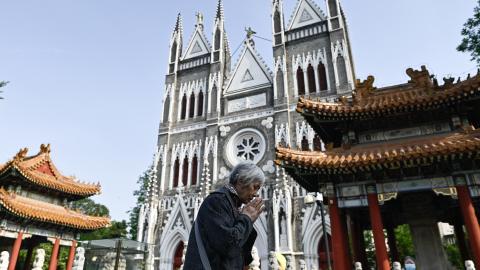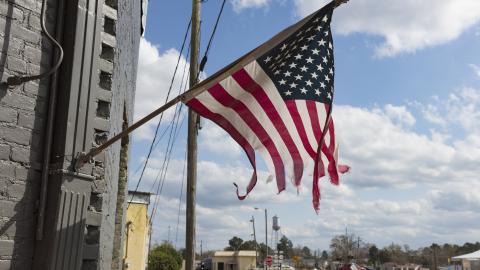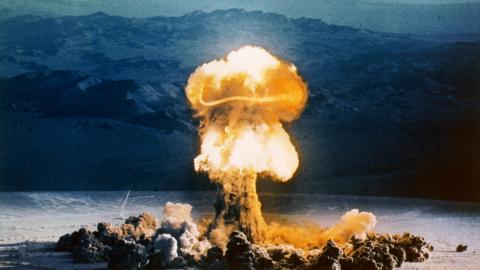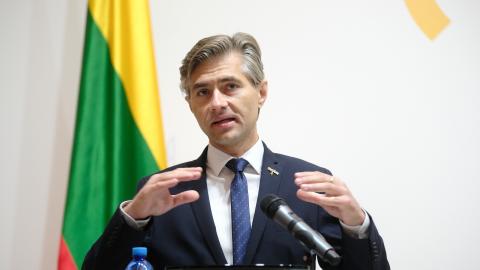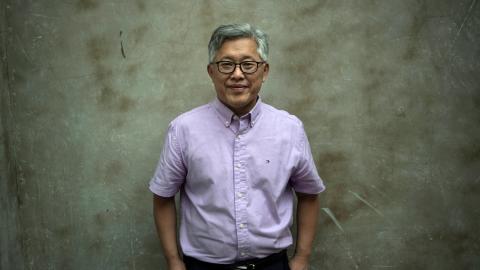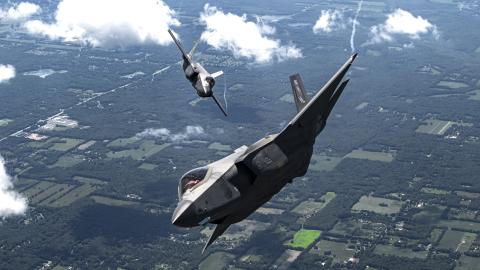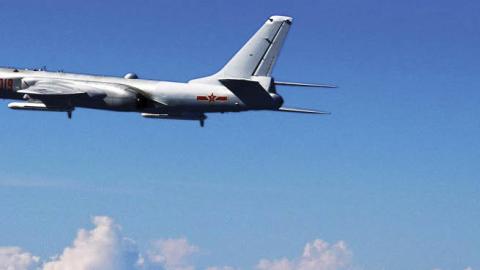2019 has not been a good year for China. General Secretary Xi Jinping’s ambitions and the Communist Chinese Party’s imperious means to achieve them have become transparent.
The current situation in the Asia-Pacific is illustrative. Two Chinese actions defined this past year's regional news cycle. First, China's reaction to Hong Kong's peaceful pro-democratic protests escalated to a full-scale military crackdown. The Beijing Government deployed 12,000 People's Armed Police – a 1.5-million strong army dedicated to internal security – to the island, beating protestors and besieging the democracy movement's university strongholds. Most remarkable has been the resilience of average Hong Kongers. The opposition lacks a designated leader and organizational structure, a clear demonstration of widespread rage at China's dishonoring the Basic Law that protects Hong Kong's freedoms and to which the CCP agreed before Hong Kong's sovereignty passed from the U.K. to China in 1997.
Second, China has escalated its campaign against Uighur Muslims in the country's West. Internal party documents have confirmed that Premier Xi and his confidants have no qualms about executing the largest instance of ethnically-targeted mass internment since the Holocaust. Beijing has constructed a Stasi-style police state in Xinjiang and deported 1.5 million Uighurs to "reeducation" camps. The more horrific accusations – that China harvests organs from Uighur men, and that Chinese soldiers are raping the wives of interned Uighur men in the form of extermination-by-forced-breeding – are unconfirmed. However, the situation merits a serious independent examination of these accusations.
Only with the context of these events, combined with China’s escalating aggression towards the United States and its Pacific allies, can the importance of Beijing’s pressure against Taiwan be grasped.
Global dominance is China’s ultimate ambition. A toxic combination of paranoia and imperial longing propels China’s rulers – reclaiming the Middle Kingdom’s place at the center of the world requires destroying America’s international position, while—as China’s rulers apparently believe—its security entails monopolizing the Western Pacific, eliminating any ethnically or politically distinct entities within China, and ensuring Chinese access to resources and markets abroad.
Chinese pressure on Taiwan, therefore, stems from the same desires that prompt repression in Hong Kong and savagery in Xinjiang. Moreover, Taiwan poses a unique problem for Beijing. Its links with the United States make it a potential forward operating base for China’s adversaries, frustrating Beijing’s ambitions to control the Western Pacific. Taiwan’s democratization after decades of military rule proves that it can govern itself without Beijing’s imperial management.
Bringing Taiwan to heel, therefore, is the inexorable result of China’s ambitions. Its actions this past year demonstrate Beijing’s multi-spectrum approach to achieving this end.
China has continued its diplomatic isolation of Taiwan. Kiribati and the Solomon Islands, two former British protectorates that have positive relationships with the United States, de-recognized Taiwan this past year. This cuts Taiwan’s formal diplomatic contacts to 14 states, the majority of which are Caribbean or South American. As Chinese economic investment and debt trap diplomacy in the Americas increases, this number may change.
Economically, China has targeted Taiwan's lucrative tourism industry. Tourists contribute to over eight percent of Taiwanese GDP. The majority have been mainland Chinese. Thus, Beijing's refusal to issue tourist visas to Chinese citizens who want to visit Taiwan constitutes a direct economic attack. Similarly, Chinese inducements to Taiwanese citizens considering living on the Mainland, and its attempts to undercut Taiwanese high-technology firms, seek to chip away at Taiwan's economic stability. Moreover, China has bribed Taiwanese news outlets to run false stories on the chimerical economic benefits Taiwanese citizens can expect on the Mainland.
Chinese domestic interference extends to electoral meddling. China used bots and hackers to support pro-Beijing candidates in Taiwan's 2018 municipal elections. Taiwan's 2020 election pits the incumbent pro de facto independence president against a candidate who in 2019 signaled a different approach to the PRC by meeting with the head of China's Taiwan Affairs Office, the Communist Party chief in Shenzhen and the directors of China's Hong Kong and Macau liaison offices. Moreover, the likelihood that the PRC seeks to sabotage Taiwan's democratic process is strong.
Most striking is China’s increasing military pressure. China’s H-6K strategic bombers have circumnavigated Taiwan intermittently since November 2016. China sailed a Carrier Battle Group through the Taiwan Strait this past July. The PLA conducted a six-day military exercise in late July simulating sea and air control operations on both ends of the Strait, an essential objective for China in a conflict with Taiwan. It staged two additional exercises in July in the South and East China Seas, functionally demonstrating its intention to bracket Taiwan in a wider conflict.
The current U.S. administration has recognized the threat that China poses, and the role Taiwan must play in any American strategy. Indeed, China conducted its summer military exercises in partial response to a $2.2 billion arms sale to Taiwan, including 108 M1A2T Main Battle Tanks, 250 Stinger Missiles, and a variety of logistical and transport equipment. The Stinger Missile, a Man-Portable Air Defense System, savaged Soviet air units in Afghanistan. China would not be able to eliminate these mobile systems in the first stage of an invasion. Taiwanese forces could, therefore, harass Chinese aircraft even if the PLA could weaken Taiwan's major assets.
Other measures would help Taiwan’s defense, for example, exploiting such asymmetric tactics as those on which China has traditionally depended. Placing missiles that can hit ships as well as land targets in shipping containers across Taiwan would give the PRC’s ruler good reason to think twice before launching an attack.
Just seven weeks after its $2.2 billion sale, Congress approved another $8 billion arms transfer, this time including 66 F-16C/D fighter aircraft. Over two terms, the Obama administration approved $14 billion worth of arms sales to Taiwan – it executed no arms sales after December 2015. By comparison, in only three years, the Trump administration has sold $12.4 billion worth of weapons to Taiwan.
Nevertheless, the precise strategic situation remains opaque. The U.S. military has shifted its Pacific deterrence strategy from one of punishment to one of denial. But aside from modified force deployments, it remains unclear exactly how this strategy will be implemented. Moreover, U.S. targeting capabilities are unclear. And China may be outpacing the United States in hypersonic and unmanned combat vehicle development.
The PRC's increasingly menacing policy toward Taiwan and its steady growth in both military capability and capacity underscore the U.S. administration's need to continue assisting Taiwan's ability to defend itself—in 2020 and the coming years.
Read in RealClear Defense

